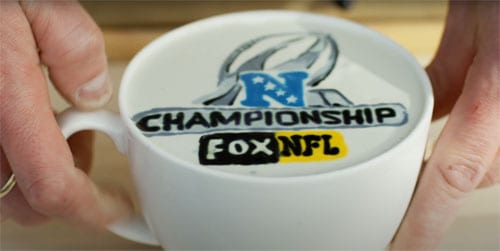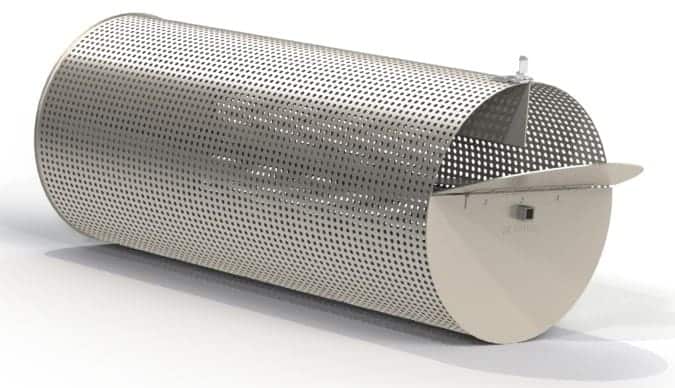

A good thermometer is very important for getting consistent and reliable results when roasting with the RK Drum. Most thermometers that come with a grill are horribly inaccurate. Even the thermometers that come with high end, expensive grills do not reliably report the temperature.

A good thermometer is very important for getting consistent and reliable results when roasting with the RK Drum. Most thermometers that come with a grill are horribly inaccurate. Even the thermometers that come with high end, expensive grills do not reliably report the temperature.
To understand why inconsistent temperature readings cause inconsistent roasts, let’s look at what’s happening in the roast. The burners in the grill heat up the grill chamber and the items inside the grill chamber – in this case, the RK Drum and the coffee beans. If the burners are set on low and are letting out a little flame, the grill chamber heats up slowly. If the burners are set on high and are letting out a big flame, the grill chamber heats up quickly. The speed that the grill chamber heats up affects how fast the coffee beans heat up.
The key to producing excellent coffee is finishing the roast in a specific amount of time.
The recommended time depends on the coffee weight and drum size. (You can find the recommended finish time for your roast in the roast profiles). So, if we want the coffee to finish in the same amount of time (per volume), then we need to heat up the grill chamber to the same temperature each time. But, if the thermometer does not give the same reading for a given temperature every time, it makes setting the heat correctly every time impossible.


To understand why inconsistent temperature readings cause inconsistent roasts, let’s look at what’s happening in the roast. The burners in the grill heat up the grill chamber and the items inside the grill chamber – in this case, the RK Drum and the coffee beans. If the burners are set on low and are letting out a little flame, the grill chamber heats up slowly. If the burners are set on high and are letting out a big flame, the grill chamber heats up quickly. The speed that the grill chamber heats up affects how fast the coffee beans heat up.
The key to producing excellent coffee is finishing the roast in a specific amount of time.
The recommended time depends on the coffee weight and drum size. (You can find the recommended finish time for your roast in the roast profiles). So, if we want the coffee to finish in the same amount each time, then we need to heat up the grill chamber to the same temperature each time. But, if the thermometer does not give the same reading for a given temperature every time, it makes setting the heat right everytime impossible.
Wondering what will happen if you just use the thermometer that came with the grill? The most likely symptoms of this problem will be unpredictable finish times and coffee that you can’t reproduce well. You will set the heat, so that the thermostat reads 500°F, for example, thinking that your roast will finish in 20 minutes. But, this time, the thermometer is reading low, and the temperature is really 575°F inside the grill. So, the coffee will roast much faster than expected, and you’ll have 2nd crack in 15 minutes. So what ends up happening is the roast that you previously liked will be not be reproduceable, and you won’t be able to predict the roast or control the roast. Furthermore, the favorable bean characteristics may not be highlighted if roasted to quickly or too long.

The next roast, for example, you set the heat lower to 450°F, since 500°F caused the coffee to roast to quickly. Now, the thermometer reads high, and the temperature is 425°F inside the grill. The roast drags on and on. After 20 minutes and no sign of first crack, you decide to crack it up to 500°F, but the thermometer is still reading high, and now the temperature inside the grill is still only 475°F. The roast continues to drag on, and finally hits 2nd crack around 30 minutes. When you taste the coffee, it will be disappointing. The long roast time causes the coffee to lose brightness, and the end result will be a baked, blah, boring coffee.

The next time, you set the heat lower to 450°F, since 500°F caused the coffee to roast to quickly. Now, the thermometer reads high, and the temperature is 425°F inside the grill. The roast drags on and on. After 20 minutes and no sign of first crack, you decide to crack it up to 500°F, but the thermometer is still reading high, and now the temperature inside the grill is still only 475°F. The roast continues to drag on, and finally hits 2nd crack arond 30 minutes. When you pour out the coffee this time, it does look much more even. But, when you taste the coffee, it will be disappointing. The long roast time causes the coffee to lose sparkle, and the end result will be blah.


